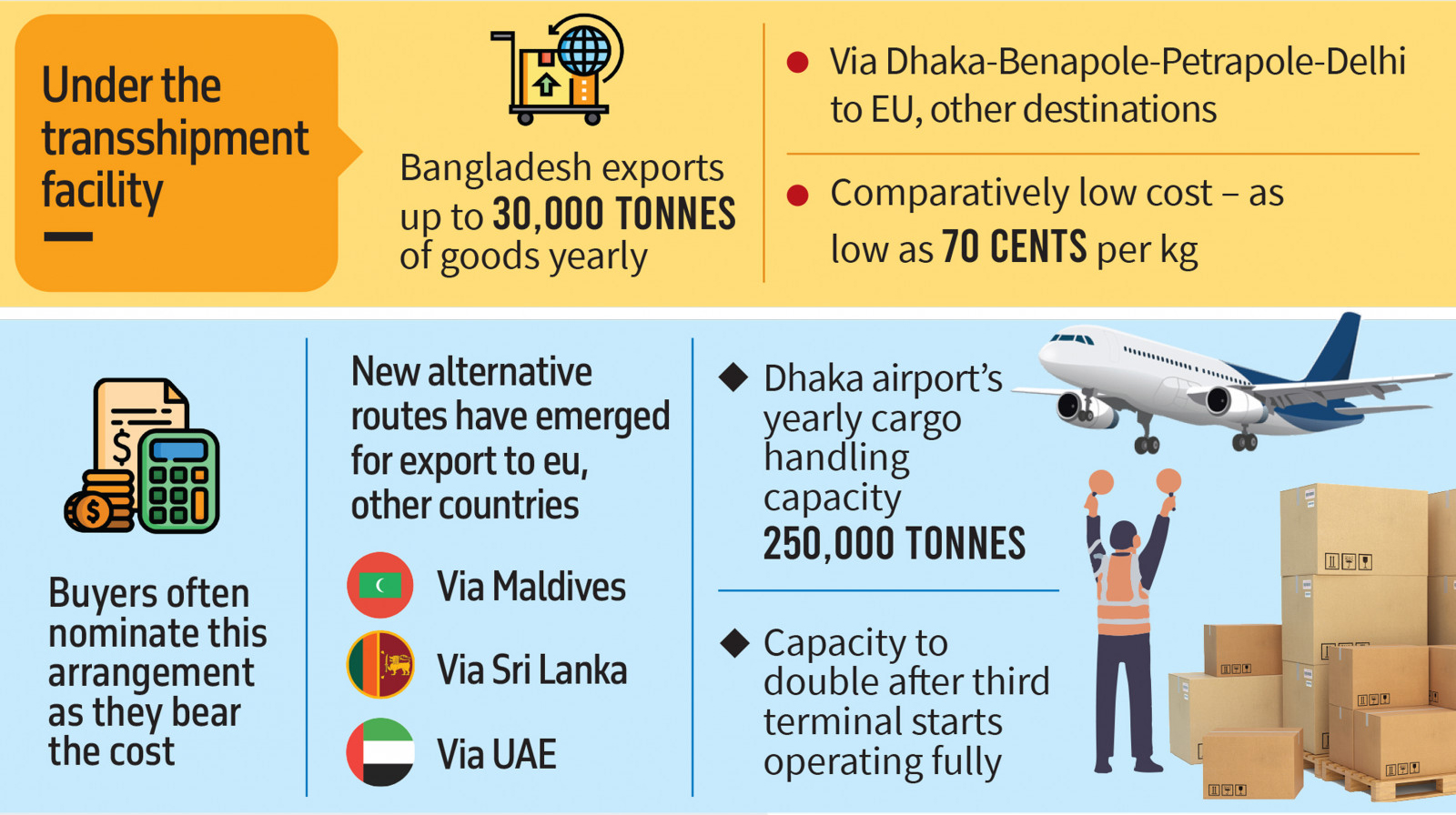Context:
India has officially withdrawn the transshipment facility it had extended to Bangladesh, citing significant congestion at Indian ports and airports. The facility, in place since 2020, allowed Bangladesh to route its exports through Indian Land Customs Stations to reach final destinations via Indian logistics hubs.
The decision took effect on April 8, 2025, following a notification from the Central Board of Indirect Taxes and Customs (CBIC), which ended the facility for Bangladesh’s trade with Bhutan, Myanmar, and Nepal.
Tensions over Recent Remarks
Although Indian officials declined to directly link the policy shift with recent political developments, it follows closely on the heels of controversial comments by Muhammad Yunus, Chief Adviser to Bangladesh's interim government. During a recent visit to Beijing, Yunus had advocated for enhanced trade between China and northeastern India via Bangladeshi ports.
Impacts on Bangladesh’s Export Sector
The transshipment facility was vital for Bangladesh’s thriving ready-made garment sector, which depends on access to markets in Bhutan, Myanmar, and Nepal. With limited direct shipping access, Bangladeshi exporters relied heavily on Indian infrastructure for timely delivery of goods.
The timing of the announcement — just ahead of New Year festivities in Dhaka — adds to the concerns of Bangladesh’s trade and business communities, which are already grappling with delays in acquiring Indian visas for cross-border business travel.
Could India’s move violate WTO rules?
According to WTO rules, especially Article V of the GATT 1994 and Article 11 of the Trade Facilitation Agreement, member countries must allow freedom of transit for goods to and from landlocked countries. The Global Trade Research Initiative (GTRI) cautioned that this decision could raise questions about India’s commitment to those principles.
Key Issues in India-Bangladesh Relations:
- Border Disputes: Despite the 2015 Land Boundary Agreement and enclave exchange, minor tensions remain along the border.
- Water Sharing: Disputes persist over Teesta and Ganges river water; Bangladesh fears negative impacts on agriculture.
- Citizenship Amendment Act (CAA): Criticized by Bangladesh as discriminatory and a threat to bilateral trust.
- Border Killings: Civilian deaths caused by Indian Border Security Forces have triggered public and diplomatic backlash.
- Anti-India Sentiment: Fueled by perceived Indian interference and the rise of Hindu nationalism.
- Trade Issues: Concerns over trade imbalance and the effect of Indian policies on Bangladesh’s economy.
- Diplomatic Tensions: Recent political shifts and leadership changes have added strain to bilateral ties.
Conclusion:
While India maintains that the move is rooted in logistical necessity, the broader context suggests a complex interplay of trade, infrastructure, and regional diplomacy that could further strain ties between the two neighbors.








